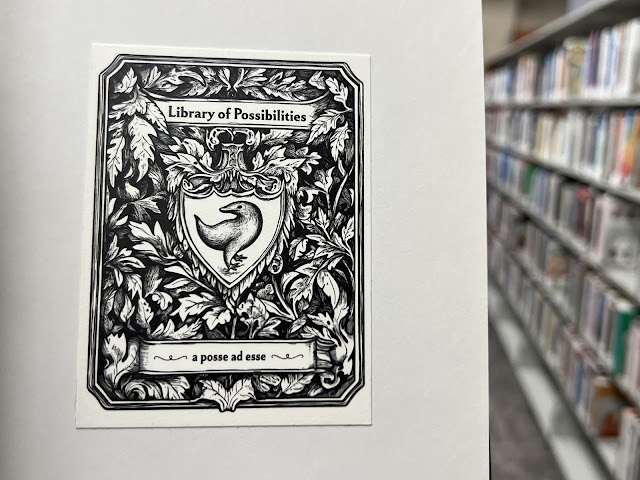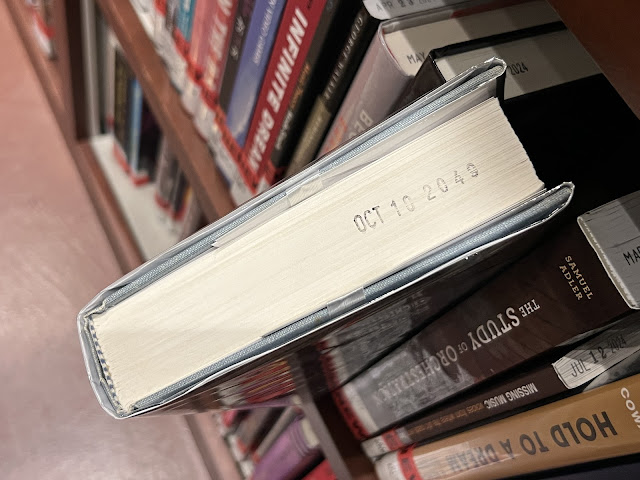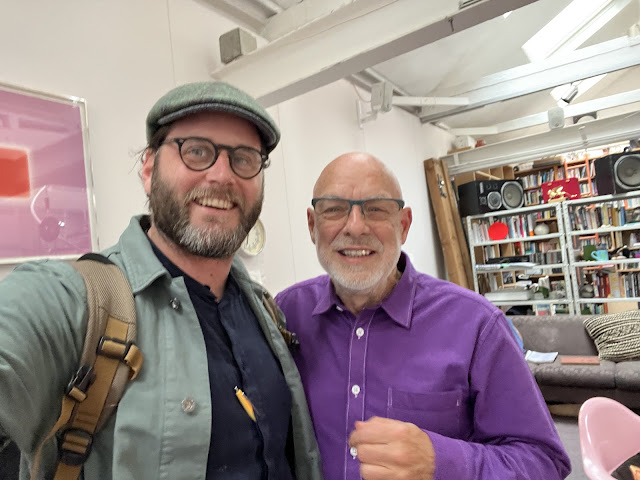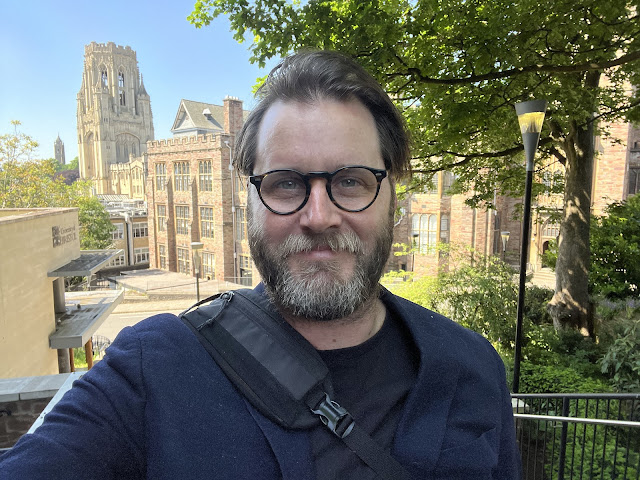Spoiler alert: more music and dancing than I expected.
Mithun, an architecture firm known for beautiful, environmentally thoughtful design, turned 75 in 02024. They might easily have contented themselves with the most obvious way to mark the moment; looking back on three generations of proud achievements. There was, after all, plenty to celebrate in their past, including recently winning the AIA (American Institute of Architects) Award for Architecture Firm of the Year.
But as a dedicated community of systemic thinkers and creatives, they resolved to use the occasion to focus less on times gone by, and more on times to come. How might the celebrations be tilted 75 years forward instead of 75 years back?
That’s when they reached out.
I offered some initial ideas, and we soon landed on an approach. Summoning everyone from across the firm to their Seattle headquarters, we would spend a day thinking, feeling, and ultimately, physically making our way 75 years into the future. But we would not confine ourselves to a singular theory or vision of change; we would make room for the whole vast, messy possibility space of future pathways.
The result was an initiative, a gathering, a celebration, a collective hallucination – a time-travel party of sorts? – called Design 2099.
On a Thursday evening, a presentation by Leonard Forsman, Chairman of the Suquamish Tribe, set the stage, by providing a historical context delving into the deep time of First Nations lifeways in the region; followed by me introducing some of the foundations of foresight and experiential futures practice, and foreshadowing, just a little, what we were about to get up to.
As it turns out, even I wasn’t fully prepared for the glorious madness that would unfold next.
On Friday, we had most of the day. Supported by a great in-house project team, I led on the order of 200 folks through the process: scaffolding people playfully into experiential futures practices for concretely imagining; then forming small groups to dive deeper into particular “what ifs”. Each group received an envelope containing two divergent kinds of future, capsule scenarios to choose between; from a collection developed with the Mithun team which in aggregate spanned a terrific variety of worlds. (Sample: an ETHICAL A.I. future; a CARBON-NEGATIVE future; a MEGA-CITIES future; a PEDAL-POWERED future; a SURVEILLANCE STATE future; an ELDERLY-CENTRED future; a GRAVITY PLAYGROUND future; a WATER WARS future; a SPACE RENAISSANCE future; a CORPORATE future; a POST-GENDER future; a RADICALLY CREATIVE future; and on and on.)
Every group was then tasked to create a stall, a participatory encounter with their chosen scenario, by thinking through its implications and distilling these into an interaction, making use of any and all materials at hand, including junk brought in from home as well as other bits and pieces found lying around the office.
The result was a sort of worldbuilding extravaganza; an explosion – or collision – of what-ifs, comprising dozens of conceptually parallel yet physically co-present versions of 02099, dreamt up and manifested by each group of participants for others to step into.
In truth, the resulting experience is a bit challenging to describe, for the best possible reason: it was among the most joyously unhinged and surprising unleashings of human energy I’ve ever had the good fortune to witness in daylight.
With all hands on deck – architects, designers and staff from all three Mithun offices; Los Angeles, San Francisco, and Seattle – the gorgeous open-plan office space of historic Pier 56 on the Seattle waterfront was filled to bursting, with weird, wonderful, and unexpected future experiences from end to end.
Those of you familiar with past work shared here at The Sceptical Futuryst might sense a resemblance to what we did several years ago to introduce futures practices to designers across the British Broadcasting Corporation. If so, you’re right on track.
From my side “Design 2099” drew on experiences I’ve had co-designing processes for high-speed co-creation which include the trio of “Futurematic” events that we at Situation Lab ran with our friends from the Extrapolation Factory a decade ago (in Toronto, New York, and Los Angeles); supplemented with countless deployments of The Thing From The Future with imaginers from around the world; and not least, the wonderful Futures Bazaar project with the BBC, originating in collaboration with Filippo Cuttica and colleagues in Manchester, England, then adapted for Pittsburgh, Pennsylvania, and more recently, held in half a dozen cities across Mexico simultaneously.
I’m sharing this project now for two reasons.
First, what happened at Mithun HQ was one of the most narratively and experientially diverse explorations of alternative futures I’ve seen at this scale. By “narratively and experientially diverse”, I mean that the process design/brief was geared toward producing not only a wide array of future narratives, or ideas about what could happen by the end of the 21st century, but also an equally wide array of experiences, or vernaculars or genres of interaction that would make sense for a big face-to-face gathering, happening all at once within a single giant space.
The former dimension of narrative diversity is probably self-explanatory, but the latter, experiential diversity, might not be so intuitive. To put it another way; at a bazaar or market, filled with objects for sale, the commercial transaction is the coin of the realm. In this case though, rather than translating or funnelling each future premise into an object-oriented, satirically sales-based interaction, the brief was aimed at opening things up. The more encompassing format or metaphor of a “futures fair” was employed to invite as many types of face-to-face encounter as folks could conceive of. So the interpersonal aspects of the event, by design, were able to emerge as more central than the future artifacts.
The resulting interactions ran the gamut from fortune-telling booths to investment pitches, from educational institution showcases to community gatherings, and from product demos to dance lessons. Accordingly, the forms of social energy expressed in these interactions was just as diverse.
When we all had a debrief chat about everyone’s experience at the end of the day, the very first reflection that anyone offered was a remark on the impressive speed with which people had come up with ideas, and on how so many of the interactions produced had been “non-transactional”.
In terms of the Experiential Futures Ladder, you could say that participants wound up staging situations – containing but not confined to stuff – as diverse as the scenarios they were thinking about.
(The relationship between this sort of work and the nearly 100 immersive scenarios / situation designs or Time Machines that I’ve visited at this point, we’ll save to explore in due course. I also plan to share more at some point about other variants we’ve explored in the design space of participatory futures.)
Second, although I’ve been delayed in finding time to write about it, this remains a vivid, notable example of an organisation “using the future” – as my friend Riel Miller might say – in a really fun and inspiring way.
Mithun deserves to celebrate, and be celebrated for, their many years of contributions to architecture of course, but also for taking some of the effort and resources associated with that anniversary milestone, and doing more than just patting themselves on the back about it. By investing in imaginative capacity, they did something unusual and generative and worthwhile; something that ought to be normal, but isn’t yet.
My experience has been that even brief bursts of emancipation from our current everyday, via entertaining potential everydays-to-come (see the “mundane turn” in The Futures of Everyday Life p. 89), are a great way to expand an organization’s horizons of the imaginable. And they offer something essential in the present, too; a way of strengthening bonds of connection and community between participants. Making space for joyful co-imagining is a kind of prefigurative politics in its own right (see TFOEL p. 220), which I think we should want to see a lot more of in these fractured, often alarming times.
As I noted in relation to the BBC’s pioneering use of a co-imagining process that later spawned THE FUTURES BAZAAR toolkit:
Am I saying that this is “the right way” to introduce futures thinking into organisations? No. It was, however, a great way to do it here, partly because this specific organisation is full of creatives, makers, and storytellers. Also, the context of an away day made a bit of fun welcome, even essential. We understood that participatory, playful and hands-on elements needed to be foregrounded here, and so they were.
In a more corporate, bureaucratic, or self-serious context, such as strategic conversation for a government department, supranational outfit, or large business, other approaches might be more suitable. Less out-on-a-limb for the participants while still inviting their engagement with future possibilities physically, emotionally, and narratively.
For a different example, consider the World Energy Council’s embrace of experiential futures as part of its triennial Congress and 100th anniversary celebrations last year. To my mind, this channels a different version of the same delightful impetus.
Many thanks then to all at Mithun, and their bold and creative leadership, in particular President Dave Goldberg; as well as a wonderful support team drawn from across the firm’s staff, especially Annie Rummelhoff, Christian Runge, Nate Smith, and Naoe White. Much appreciation also to Danielle Engelman of The Long Now Foundation for joining the dots; and to my fellow event invitee, Chairman Leonard Forsman, for a beautiful welcome and orientation in both time and place, which provided the best possible portal to an open-hearted exploration of alternative futures. Last but not least, a grateful hat-tip to Sam Auster, whose excellent video documentation (my condensed re-edits of his footage above) somehow managed to bottle the lightning of the futures fair at Design 2099.
Related:
> Tomorrow’s Energy Today – for the World Energy Council (Medium)
> Dreaming Together – from the book Made Up: Design's Fictions (pdf version)
> Introducing experiential and participatory futures at the BBC
> THE FUTURES BAZAAR public imagination toolkit
> 1-888-FUTURES with Extrapolation Factory
> The School of Worldbuilding (pdf version)
> Using the Future at NASA (pdf version)
> On Getting Started with Experiential Futures – with The Omidyar Group
> What is the value of futures and foresight? – for the RSA
> The Futures of Everyday Life (pdf version)























